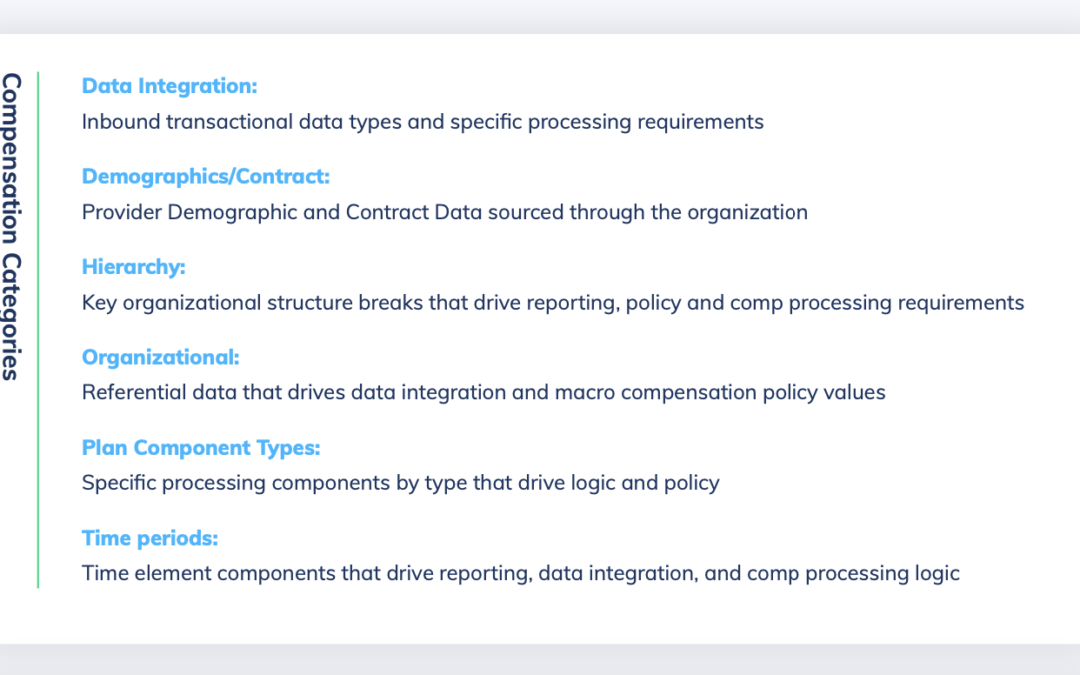The wRVU methodology is a well-designed scale to value provider time and risk. This makes it a natural fit to use as the main productivity compensation metric, but is your organization’s scale calibrated correctly to handle modifier, bilateral, and multiple procedure adjustments?
Calibrate your wRVU scale: Comp wRVUs could be off by up to 25% per provider if the proper methodology is not applied to adjust for modifier adjustments, multiple procedures, bilateral, and unlisted codes.
While the split share deferral is no surprise, there are still significant opportunities and current issues to prioritize to improve the accuracy of your wRVUs used for purposes of compensation and reporting. This leads to an opportunity to correct your wRVU methodology and realize savings or redistribute/reallocate funds fairly across your provider population.
In this article, learn how this problem impacts your organization and how to establish internal capabilities to automate current and future logic, such as modifier adjustments, multiple procedures, bilateral, unlisted codes, split share, and other linkages to the charge lifecycle.
Exposing a Flaw in wRVUs
While wRVUs are a proper productivity scale that values time and risk, these are not simple lookups. Instead, the process has several critical and complex steps that must consider the entire encounter (may be called a case, claim, or voucher, depending on the organization, but is defined as all applicable services of a patient in a relevant time period).
However, Practice Management Systems (PMS) nor the payer remittance process are managing these complex calculations for most organizations.
While your revenue cycle is auto-correcting because payers follow this processing method, those payers are not adjusting your wRVU, which is used for provider comp.
With nothing coming back from the payer to adjust wRVUs, organizations are using the wRVU values that were billed and not paid. Since a high percentage of providers are on wRVU payment models, this creates a gap if you are not correctly adjusting your wRVU values used for compensation when the provider bills them.
It is common for organizations and PMS to adjudicate wRVUs on a per CPT basis (e.g., only at one line item level) and only with posted modifiers. This is not correct as it inflates the wRVU values and will cause overcompensation to some specialties. This inflation affects the distribution of available compensation throughout the organization.
Due to technology and process gaps across the industry, there are major variations in how provider organizations are adjusting wRVUs for compensation.
These variations – and flawed methodology – impacts the industry as a whole as it is applied or included in benchmark surveys and used to set rates across the industry. Since many have a broken scale, specialties are at high risk of being over or undervalued.
This skews the overall benchmark data, leading to organizations altering the per wRVU rate or the threshold values manually without a way to justify those changes fully to the provider groups.
Ultimately this affects provider relationships because they perceive the rate-setting strategy as unfair.
Properly Adjudicating wRVUs
Many organizations do not realize or have issues operationalizing that to calculate modifier, bilateral, and multiple procedure adjustments, data must be evaluated at the encounter level. Additionally, it must factor in the complex CMS-derived logic that all payers generally follow that uses indicators assigned to each scenario by procedure code.
If your process only looks at modifiers or one claim/CPT line item to designate adjustments, it is a flawed methodology and should be revisited.
There are over thirty unique scenarios and claim weights based on the combination of indicator, adjustment type, and position order (e.g., different weights based on the value of the claim compared to others in the encounter).
While most payers follow CMS, specific regional payers may follow slightly different methodologies that require additional consideration. Additionally, there are 95 combinations of payment modifiers and status indicators (16 unique modifiers with varying values of adjustment based on the status indicator).
While these thirty scenarios may include the use of right (RT), left (LT), and bilateral modifiers (50), the presence of these modifiers alone does not drive bilateral adjustment methodology. Along the same lines, when it comes to multiple procedures, a 51 modifier does not drive adjustment methodology; instead, it is the CMS indicator and scenario criteria that identify these adjustments and the required calculation. If your process is predicated by these modifiers’ presence alone, it is flawed.
These types of cases are then exponentially applied or layered with other 95 payment modifier scenarios. Modifiers may change the adjustment methodology, but they are not the driver of the adjustment. Even when modifiers are present, like AS and 80 for surgical assistants, those adjustments should consider indicator values rather than blindly adjusted.
Logically, wRVUs values should match the designed value scale created by CMS wRVU methodology, which drives contracted rates, but the complexities of doing so obstruct many. Organizations must first account for bilateral and multiple procedure adjustments at the encounter level and then layer on the payment modifier adjustments.
How Does Your Comp Process and PMS System Stack Up?
Do your systems and processes effectively address the following scenarios to calculate true wRVU values that match your payers’ logic?
- Modifier Adjustments
- Bilateral and Multi-procedure Adjustments
- Other modifiers (e.g., Assistant at Surgery, Co-surgeon, Standard/Payment Modifiers, Global, etc.)
- Fee schedule modeling and comp impact analysis
- Unlisted Codes/ Internal Codes (e.g., service line management, phantom, outside RVUs, etc.)
- APP/Team Crediting (i.e., varied logic to assign value to multiple providers)
- Shared Credits (e.g., injections, radiology, lab, etc.)
Organizations’ inability to accurately calculate true wRVU values is a major issue across the nation affecting provider perception, benchmarking, and rate-setting accuracy. It also hinders the transition to value-based care. The impact to a provider’s earned productivity compensation when the proper wRVU modification calculations are taken are significant (up to 25% for certain specialties). This means some of your providers could have overvalued wRVU, creating a 25% overpayment. For a typical system with all specialties under its umbrella, this can still equate to several percentage points of total compensation when the whole population is evaluated.
Until systems use the proper standardized methodologies, benchmarking data will remain unreliable because of the variation in wRVU adjustment practices. It is a complex process, but it can be automated, transparent, and easily managed ongoing with technology.
Here are 4 ways you can ‘balance the scales’:
Value Provider Time and Risk Accurately Across your Population
One of the key factors to consider in identifying issues in your organization is how much your provider population is weighted toward proceduralists. The higher the volume of proceduralists, the higher the variance in wRVU calculations.
If you have a normal mix of providers, then it may mean you are valuing proceduralist time too high in the wRVU credit assignment process, creating inequities in cash distribution. These funds may need to be deployed to other specialties that have been negatively impacted or lower the overall investment in the physician enterprise.
Accurately Set Rates
Fixing this issue allows the scales to be rebalanced by setting rates with an accurate picture of the provider’s time and risk. If you are using incorrect wRVU values to determine rates across your organization, it affects all providers; some are winning while others are losing. This is problematic because you have to set a per wRVU rate below the wRVU benchmark percentile to offset the inflated wRVUs. So you may set your wRVU Rate at median for 60th Percentile wRVU attainment.
A factor in this difference could be that your wRVUs are inflated because the proper adjustment methodology is not being implemented.
Fix Provider Perception
Leaders are forced to make decisions and use benchmarking data that may or may not align with your organization’s wRVU adjustment methodology. When providers see this inequity or compare rates with peers inside and outside the organization, it creates distrust, confusion, lower morale, and turnover.
Specific non-proceduralist specialties, such as primary care, inpatient care, radiology, ophthalmology, OBGYN, Psychiatry, etc. could be impacted the most. For these specialties, wRVUs are not affected as much by adjustments, but their production and pay rate was valued internally with specialists who have inflated values. Even for your proceduralist, regularly giving transparency of these calculations and line item wRVU data will go a long way to developing and maintaining trust in calculations. Some providers may even increase wRVUs if they do many bilateral procedures. Providers should be able to trace and see adjustment methodologies.
If you find yourself having to take draconian measures to explain and support your organization’s wRVU rate strategy to your providers or deal with the fallout and turnover related to that issue, then you may have a wRVU adjustment problem.
Redistribute Funding to Value and Team-Based Initiatives
Taken as a whole, this means the scale used to value provider time and risk may be out of balance. Some specialties may be overvalued if the distributable pool of dollars is highly weighted towards wRVUs. While some groups of providers may need to be adjusted up, others need to be adjusted down.
Taking control of this allows the flexibility to fix or reappropriate those issues over time. It also affords the opportunity to carve out more funding for value-based initiatives or realize savings.
After the adjustment process is evaluated and once the impact is known, you can take measures to fix these issues and balance the scales across the organization.
Current Methodologies to Approach wRVU Adjustments
Across the industry, ProCARE sees a variety of approaches to properly adjusting wRVU values, but many are missing the encounter level logic.
These methodologies include four main strategies:
- Doing Nothing / Infrequent Analysis / Sporadic Consideration – System may be adjusting for some elements or looking back retrospectively when setting rates/salaries.
- Line Item Attempts – Adjusting straight line item amounts based solely on appended modifiers.
- Case/Voucher Level with Gaps/Error Prone – Some level of evaluation at the encounter level but with gaps remaining due to the complexities of the process, manual errors, etc.
- Total Adjustment – Use of CMS guidelines with regional considerations
Health systems could use a homegrown solution, excel/manual, be 100% dependent on their Practice Management Vendor, or use a commercial product. Regardless of the methodology, you will find varying degrees of compliance with the fundamental rules considered when the wRVU scale system was designed.
Not making adjustments per the design of the wRVU system is like using a broken compass to navigate. This affects every organization because these mixtures of incomplete adjustments are being reported on surveys. You will also see different abilities to control the process and varied levels of transparency if any at all.
What is truRVU®?
Depending on your mix of providers and where you fall in the four current methodology buckets, the impact on the wRVU calculations could be misstated by up to 25%. The process of quantifying the variance and defining the True wRVU is simple with the right technology.
ProCARE’s truRVU® is a process that automates all payer logic for adjustment and provides flexibility for unique regional, system, or provider-specific requirements. truRVU® also manages billing-related edits where complex logic is needed across vouchers, provider types, and multiple providers. Rules are also client-controlled to account for MAC, regional payer nuances, or organizational preferences.
To assess your organization’s risk and opportunity, a subset of your data can be run through truRVU assessment tool to value the impact.
With truRVU®, leadership has the correct data to make decisions, and providers have full transparency comp wRVU process. Providers can understand how the process works and trust its accuracy, and leadership can use accurate data to set rates and make decisions.
Once you get through these critical issues, it is also time to consider what your billing practices are doing around billing edits to automate the clean-up, assignment, and value complex issues such as:
- Split Share processing
- Same-Day Procedural Logic
- Duplicate Code Logic
- Denial data linked to comp wRVUs
- Same Day Follow Up logic
- Admission/Discharge/Follow-Up Logic
Do you know your truRVU®?
Organize, manage, and automate your wRVU calculations to be compliant. Speak to ProCARE’s Strategic Services team to find out how you can test your wRVU Adjustment process today and evaluate opportunities to rebalance the scales in your organization.










